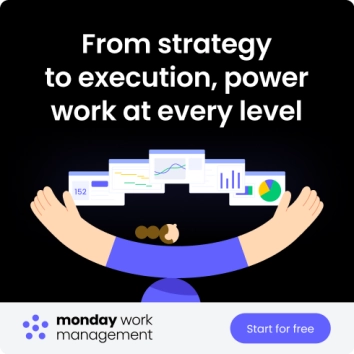Do you ever feel like there aren’t enough hours in the workday? Juggling multiple projects, endless emails, and constant interruptions can leave you feeling overwhelmed and unproductive. Many professionals struggle to find a sustainable balance between workload and well-being, impacting both their performance and overall job satisfaction. This feeling of being perpetually behind is a common challenge, and it’s one we can address together.
This article explores plenty of practical and actionable strategies to enhance your efficiency at work in 2026. We’ll delve into techniques for mastering time management, prioritizing tasks effectively, and creating a workspace that supports focus.
You’ll also discover how to leverage technology thoughtfully and cultivate work habits that foster a positive and productive mindset – all designed to help you reclaim your time and reduce stress.
Let’s move beyond simply “doing more” and focus on working smarter.
Key takeaways
- Clarify priorities: knowing what matters most eliminates low-value tasks and improves decision making.
- Structure your focus: simple systems like time blocking and task batching reduce context switching.
- Improve your environment: a tidy physical and digital workspace supports clearer thinking.
- Use automation thoughtfully: removing repetitive work frees time for higher-impact tasks.
- Adopt monday work management: streamline tasks, communication, and workflows in one place.
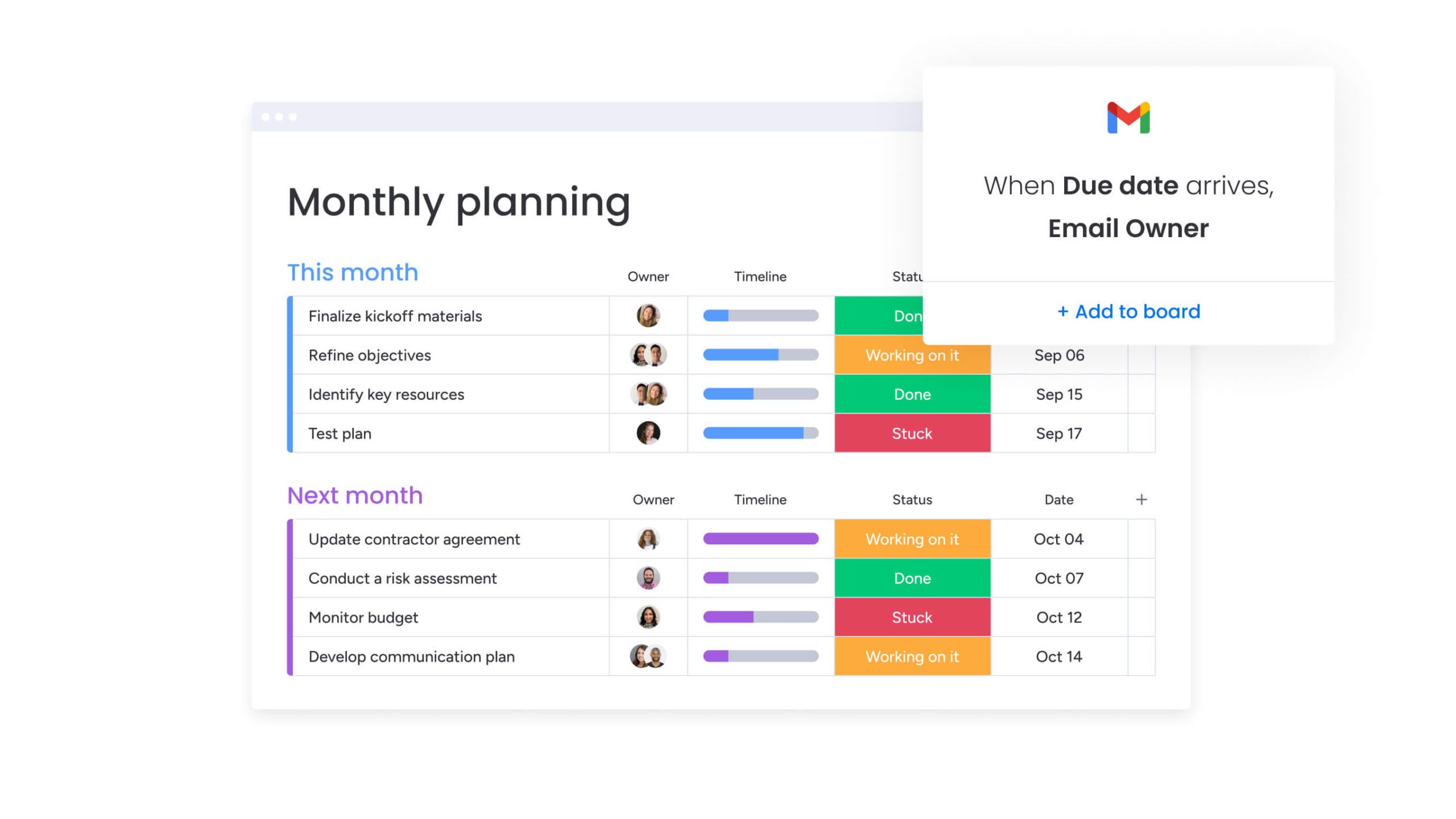
What workplace efficiency really means in 2026
Efficiency is often misunderstood as speed. But efficiency isn’t about racing through your tasks — it’s about removing the friction that slows you down in the first place. It’s the difference between a day spent wrestling your tools, digging for information, switching between five conversations about the same project, and a day where your work moves forward smoothly because your priorities, processes, and systems support you.
In 2026, efficiency means:
-
Cutting through clutter and focusing on the work that actually matters,
-
Spending less time coordinating and more time creating.
-
Reducing unnecessary back-and-forth.
-
Being prepared instead of reactive.
-
Working in environments that help you think instead of drain your attention.
Ultimately, it’s about feeling in control of your day, instead of letting your day control you.
Why efficiency matters more now than ever
Our work environments have shifted dramatically in just a few years. Teams stretch across time zones, projects weave through more stakeholders, and digital tools keep multiplying. Expectations for responsiveness continue to rise, and communication rarely pauses long enough for anyone to fully reset.
All of this leads to a simple truth: the habits that once served us well no longer match the pace or complexity of modern work.
Improving efficiency creates space to think, plan, and do work with intention instead of urgency. It gives teams a shared rhythm, reduces the burnout that comes from reacting all day, and makes daily work feel more meaningful because your energy goes toward tasks that create real impact.
You can feel the difference when efficiency improves. Projects move without stalling, meetings have clearer purpose, communication flows more smoothly, and teams spend less time firefighting and more time building the work that actually matters.
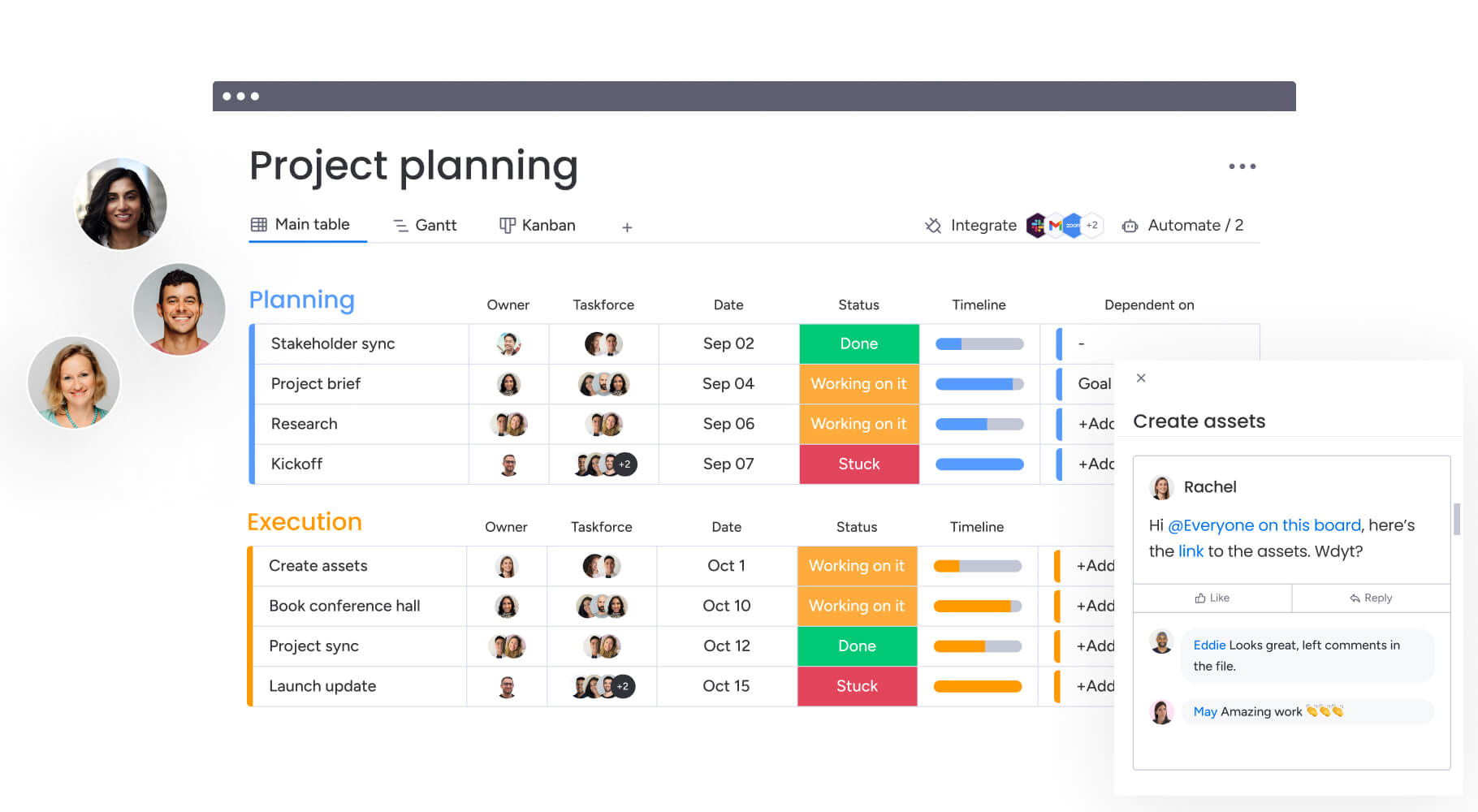
What gets in the way of efficient work?
Before you improve efficiency, it helps to understand what undermines it. Most teams don’t struggle because they lack skill or motivation. They struggle because work has become crowded with obstacles that drain attention and momentum.
Some of the most common include:
- Unclear priorities: without a shared sense of what matters most, even high-performing teammates can pull in different directions.
Information scattered across tools: when context lives in too many places, decisions take longer and mistakes creep in.
Unnecessary manual work: repetitive tasks eat away at time that could be used for more strategic thinking.
Constant interruptions: notifications, messages, and unscheduled requests break focus before you can make progress.
Overscheduled calendars: full days leave no space for deep work or meaningful planning.
Chaotic digital environments: cluttered files, outdated documents, and poorly organized systems create invisible friction.
Poorly structured meetings: without a clear purpose or outcome, meetings drain more time than they save.
These obstacles are real, but they are also solvable. And once you remove them, the difference in how your day feels is remarkable.
Strategies to help you work more efficiently in 2026
1. Start with clarity about what matters most
Efficiency begins with direction. When you know what you are working toward, decisions become easier and your day becomes more intentional. Clear goals help you distinguish essential tasks from work that only feels urgent. They also give you a filter for choosing where to spend your best attention.
To build this clarity, break broad objectives into specific outcomes and capture them somewhere visible. Revisit them regularly so they continue guiding your daily and weekly priorities.
2. Prioritize your work with intention, not urgency
It is easy to let the loudest task dictate your day. Intentional prioritization helps you step back and focus on work with the highest impact. Whether you use a framework like the Eisenhower Matrix, impact-versus-effort scoring, or a simple daily top three, the goal is the same: decide what deserves your attention before the day decides for you.
When you prioritize consistently, you prevent your schedule from being shaped by interruptions or shifting requests.
3. Use structured focus blocks to protect your attention
Deep work rarely happens by accident. Focus blocks give your mind uninterrupted time to think, create, and make meaningful progress. They can be short and intense, like Pomodoro intervals, or longer morning sessions reserved for your most important work.
During these blocks, silence non-essential notifications, reduce tool switching, and commit to one task at a time. Over time, these sessions become an anchor in your workday.
4. Break large projects into steps that feel manageable
Big tasks often stall because they feel vague or too complex to begin. Breaking work into smaller steps removes that barrier and makes it easier to move forward.
You can turn a broad task into a clear plan by identifying the sequence of actions required. For example:
-
Review inputs: gather documents, data, or context.
-
Outline the work: define the structure or approach you will take.
-
Complete the first draft: focus on progress, not perfection.
-
Refine and finalize: improve clarity, accuracy, and completeness.
Smaller steps make progress visible and help maintain momentum.
5. Keep communication connected to the work, not scattered across tools
Inefficiency often hides inside fragmented communication. When updates live in emails, chat messages, or old documents, it becomes harder to understand what is happening and what needs to happen next.
Streamlining communication does not mean sending more messages. It means creating predictable spaces for conversations and keeping context close to the work. Shared documents, consistent update habits, and centralizing decisions all reduce friction and prevent repeat questions or missed information.
6. Create a workspace that supports focus rather than competing with it
Both your physical setup and digital environment influence how efficiently you work. A cluttered desk, an overflowing Downloads folder, or a desktop filled with windows creates constant distraction.
A supportive workspace is simple and intentional. Clear your desk of items you rarely use. Group tools logically. In your digital world, organize files, archive what is no longer relevant, and create clear naming conventions. When your space feels calmer, your mind can focus more easily.
7. Reduce distractions by designing boundaries around your availability
Most people do not struggle with distractions because they lack discipline. They struggle because their environment encourages interruptions. Adjusting your notification settings, creating “focus hours,” or communicating preferred contact windows helps reduce external pulls on your attention.
These boundaries allow you to protect your most productive hours without disconnecting from your team.
8. Use automation to eliminate repetitive work
Repetition is a quiet drain on efficiency. Tasks like sending reminders, updating statuses, or assigning work can be automated so your time and mental energy go toward work that requires human judgment.
To identify what to automate, look for patterns in your weekly workflow. Ask yourself:
-
What tasks do I repeat daily or weekly?
-
What steps depend on others but could move automatically?
-
Where does work slow down because someone needs to nudge it forward?
Automating even a few of these steps can transform the flow of your day.
9. Use cloud-based tools to simplify collaboration
Cloud-based solutions like monday work management make teamwork easier by allowing everyone to work from the same source of truth. Instead of versioning documents through email or creating multiple copies, teams can collaborate in real time, comment directly on work, and move tasks forward faster.
This reduces delays, improves accuracy, and eliminates the confusion that comes from outdated files or scattered feedback.
10. Use data to understand where your time and effort truly go
People often believe they know how they spend their time, but data tells a more accurate story. Tracking your time, reviewing dashboards, and exploring workload reports helps you see trends that might not be obvious day to day.
This insight helps you make informed decisions about where to invest your effort, which tasks to streamline, and which processes need adjustment. Small changes based on real data often create the biggest improvements.
11. Develop habits that help you work sustainably
Efficiency is supported by habits that protect your energy and focus. Short breaks help you reset. Setting realistic expectations prevents overwhelm. Delegating work creates space for tasks that only you can complete. Avoiding perfectionism frees you to make steady progress rather than getting stuck on details too early.
These habits are simple, but when practiced consistently, they create a more sustainable and focused workday.
12. Refine your workflow regularly as your work evolves
Efficiency is not a static achievement. Your processes need to evolve as your responsibilities, tools, and team structures change. Regular reviews help you identify bottlenecks, remove unnecessary steps, and simplify workflows that have grown too complex.
A mindset of continuous improvement keeps your work aligned with your goals and prevents your systems from becoming outdated or rigid.
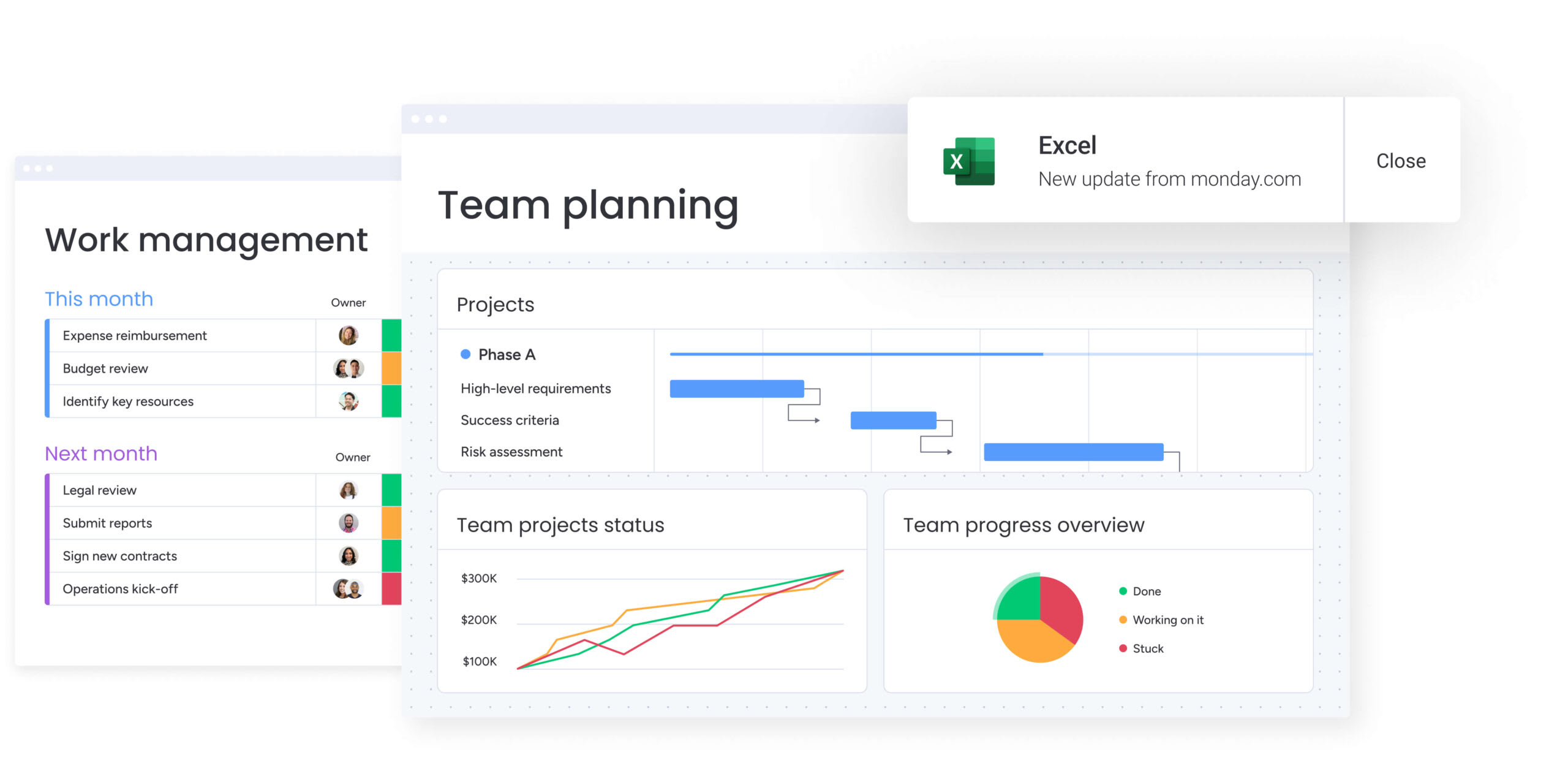
How collaboration shapes efficiency
Even the most organized individual can only work so efficiently if the team around them is out of sync. Collaboration plays a critical role in how smoothly work moves across a project, a department, or an entire organization.
Efficient collaboration happens when teams share context easily, communicate with intention, and trust the systems that support their work. When this alignment is absent, bottlenecks form quickly. Tasks stall waiting for answers, deadlines slip because information is scattered, and misunderstandings multiply.
Building collaborative efficiency means creating shared expectations for how communication flows, where updates live, and how decisions are documented. It also means reducing the number of tools teams must monitor so information is easier to find and action is easier to take.
Teams that collaborate efficiently do not move faster because they rush. They move faster because they move together, with fewer gaps between each step. This alignment not only improves output but also creates a calmer, more predictable work experience for everyone involved.
The relationship between efficiency and employee wellbeing
Efficiency is often framed as a workflow challenge, but it is just as much a wellbeing challenge. When people feel stretched thin or constantly behind, their ability to focus, make decisions, and stay motivated drops sharply. The result is a cycle where inefficiency fuels stress, and stress fuels even more inefficiency.
A sustainable approach to efficiency begins with recognizing that wellbeing is not a bonus — it is a prerequisite. Your ability to work with clarity depends on your ability to rest, reset, and feel a sense of control over your day. When your mind is overloaded, even simple tasks feel heavier. When your energy is steady, complex work becomes more manageable.
Wellbeing and efficiency reinforce each other. The more supported and balanced you feel, the more naturally your work flows. And the more your workflows reduce friction, the easier it becomes to maintain your mental and emotional balance. This is why the most efficient teams are often the ones that create space for people to work in a way that feels sustainable.
A few wellbeing-oriented habits make a meaningful difference:
-
Take restorative breaks: short resets throughout the day help your mind recover from cognitive load and maintain sharper focus.
-
Set realistic expectations: choosing progress over perfection prevents the stress spiral that slows teams down.
-
Protect deep work windows: giving yourself uninterrupted time reduces anxiety and increases creative confidence.
-
End your day deliberately: closing loops and noting unfinished priorities frees your mind from carrying work into personal time.
When teams embrace the idea that wellbeing and efficiency are interconnected, the culture begins to shift.
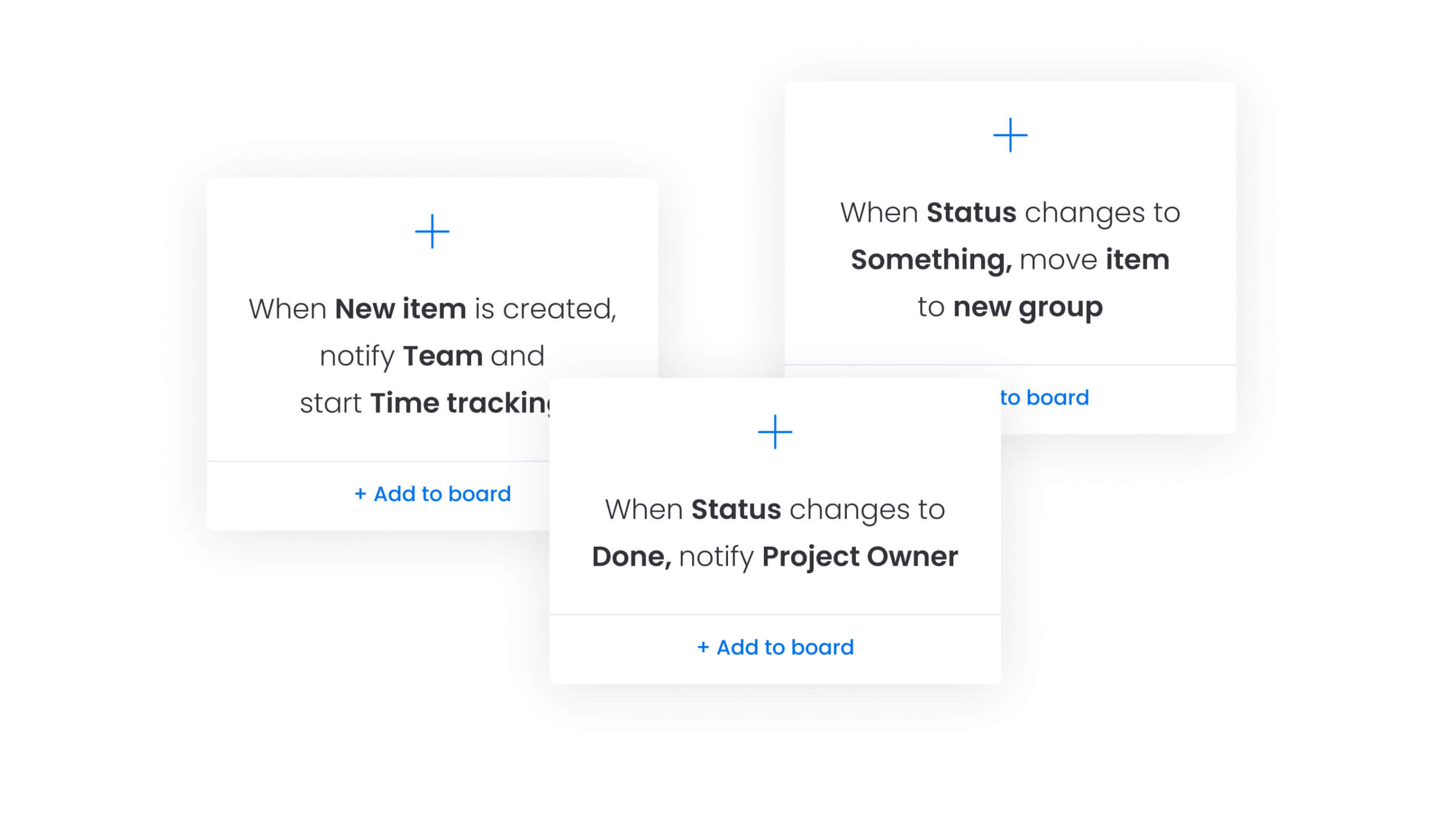
How monday work management helps teams increase efficiency
The strategies in the sections above are powerful, but they become far easier to practice when supported by a platform designed for clarity and momentum. monday work management brings your work, communication, and data together so you can move through your day with confidence instead of friction.
Here’s how it supports efficient work:
A clear structure for your tasks and priorities
Boards show what needs attention, who owns it, when it’s due, and how it connects to other work. This clarity reduces uncertainty and helps everyone start the day with direction.
Communication that stays connected to the work
Updates, files, decisions, and notes live alongside the tasks they belong to. You don’t waste time searching across tools or revisiting old threads looking for context.
Automations that keep work moving
Automations handle repetitive tasks like reminders, status updates, handoffs, and assignments. This creates smoother workflows and reduces manual effort.
Timelines that make your workload predictable
Timeline, Gantt, and dependency views give you a clear picture of your schedule. You see where tasks overlap, where risks exist, and where to make adjustments.
Workload visibility that prevents burnout
Workload views show who is over capacity and who has room to help, making it easier to distribute tasks fairly and maintain team balance.
Real-time dashboards for informed decision making
Dashboards turn work into insight. You can track progress, spot bottlenecks, and stay aligned with goals using data that updates automatically.
Integrations that reduce tool switching
monday work management connects seamlessly with tools like Slack, Google Drive, Zoom, HubSpot, and Outlook. Instead of jumping between apps, your work stays connected and easy to manage.
Frequently asked questions
What's the difference between efficiency and productivity?
Productivity measures the quantity of work completed, while efficiency measures the resources (like time, cost, and effort) used to produce that work. For example, writing 10 reports is productive. Writing 10 reports in half the time it usually takes is efficient.
How do you measure workplace efficiency?
Workplace efficiency can be measured using various key performance indicators (KPIs). Common methods include tracking the time-to-completion for tasks, measuring resource utilization (e.g., budget vs. actual spend), calculating output per employee, and monitoring error rates. On monday.com, dashboards can be configured to track these metrics in real time.
What are some examples of workflow automation?
Common examples include: automatically assigning a team member when a task status changes to 'In Progress,' sending a notification to a manager when a task is marked as 'Done,' creating a new item on a board when a form is submitted, or sending a recurring reminder for weekly reports. These simple automations save time and ensure no steps are missed.
How can I improve efficiency while working from home?
To improve remote work efficiency, focus on clear communication, establish a dedicated workspace to minimize distractions, and use a centralized platform like monday.com to maintain visibility on tasks and progress. Setting clear boundaries between work and personal time is also crucial to prevent burnout and maintain focus.
Can monday.com help with resource management to improve efficiency?
Yes, monday.com is designed to enhance resource management. Features like the Workload view give managers a clear overview of each team member's capacity, helping to prevent burnout and ensure tasks are distributed evenly. This visibility allows for better planning and allocation of resources, which is a key driver of overall efficiency.

